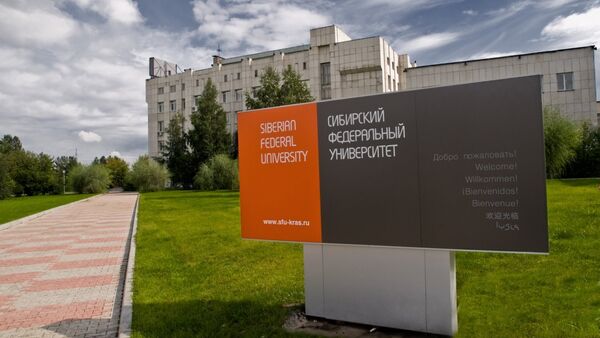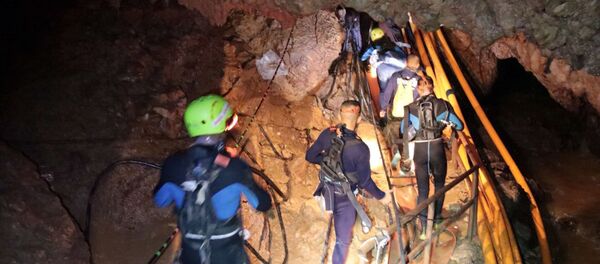Sputnik: A few days ago the first CDIO engineers graduated from SFU. What is the goal of this pilot project? Why do many experts say it is a costly affair intended for the elite?
Natalya Gafurova: CDIO is an international initiative that originated at MIT (Massachusetts Institute of Technology) about 10 years ago in response to the crisis in engineering education.
We have asked many employers for their opinion of current engineering education and they said that, generally, graduates had fine theoretical knowledge but that this had little to do with practical engineering.
CDIO includes 12 educational standards that were developed by the leading international experts on higher engineering education. This set of standards forms a system that results in new educational skills if fully implemented.
Sputnik: What new disciplines have been introduced?
Natalya Gafurova: In recent years, engineering has witnessed global shifts fueled by a number of needs including green technology, professional responsibility, and the like. Japan, for example, offers a four-year engineering ethics course that answers two simple questions: How will this engineering innovation help people and what will happen after the device falls into disuse? We have also introduced a smaller course of this type.
We have also replaced a number of disciplines, revised overburdened theory, and introduced seemingly odd courses like "Cost Effective Production," "Industrial Design," "Project Management," and others.
If you understand what role engineering discoveries played in their time, the facts of history appear in an entirely new light. As a result, our history teachers had to revise their teaching precepts and work with instructors from the engineering disciplines.
READ MORE: On the Lookout: Largest Digital Camera Ever Built Will Scan Skies for Asteroids
The same was true with foreign languages. We had to intensify language training. The first two years are devoted to mandatory studies, whereupon students chose their professional and industry-specific language. They can easily handle databases and read international journals. In this sense, they are sometimes even more competent in a number of areas than their thesis supervisors, who lack this kind of language training.
Sputnik: What kind of problems have cropped up during the project?
Second, we need active teachers that are dissatisfied with their current performance and who seek to upgrade their skills. We are investing heavily in teacher retraining. Education is a hi-tech industry. If we lack new human-factor technologies, we'll get only limited output.
READ MORE: Russia Considers Developing Super-Powerful Nuclear Torpedo
Each instructor takes one or two retraining courses per year, as envisioned by the education standards. One standard requires a teacher to take mandatory upgrade training at a company to understand the modern engineering context. The other standard is about improving mandatory teaching skills.
Sputnik: Have you coped with the personnel problems?
Natalya Gafurova: Not quite. We need to understand that education is a conservative affair. We feel resistance to change both at the administration level and in the academic community. We are creating a new community, occasionally breaching tradition, like teacher autonomy in a lecture hall, where he or she is "king of the hill." Oh no, we practice teamwork: classes are often conducted by two or three academics, sometimes in various languages at the same time.
To induce emotional involvement in studies, students play the STEM game during the first term, which promotes the idea that you can't make a single engineering device unless you know physics, math, etc. This is our way of motivating first-year students to get their teeth into hard-core disciplines.
Sputnik: Each undergraduate student must implement an individual or team project that is assessed by a group of qualified engineers. Are there any interesting student projects?
Natalya Gafurova: Awhile back, our students redesigned the wheelchair for Paralympic curling players. Another project was a cute bench for children wrapped around an exotic tree; it's like a fairy-tale come alive and invites a child to play.
READ MORE: China Working Toward Next-Gen Quantum Radar to Track Ballistic Missiles
They have also developed a welding device that can make a very long and even seam. The human hand is only capable of making a meter-long seam. They also invented a device for rhythmical circular welding for pipes. The students have compiled an interesting guide called ‘Physics for Schoolchildren,' which identifies physical phenomena and social projects such as designed facilities for collecting used batteries and paper. There are many students and their innovations are quite diverse.






